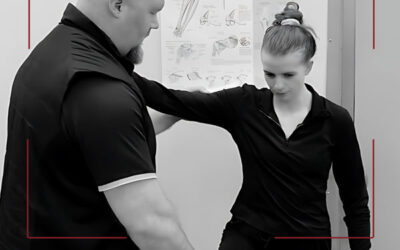Although athletic training as a profession is expected to grow at an above average rate over the next decade, there are still many misconceptions about the job role of an Athletic Trainer (AT). Athletic trainers are frequently confused with personal trainers, but there is a large gap in educational requirements, the type of patients treated, and skill set. ATs are healthcare professionals who are skilled in prevention, physical examinations, musculoskeletal diagnosis, treatment and rehabilitation, and the management of acute and chronic injuries. As recognized allied health professionals, Athletic Trainers must graduate from an accredited master’s program and become licensed. Traditionally, they provide treatment or services as part of a sports medicine team in the collegiate or high school sports setting under the direction of or in collaboration with a physician. However, Athletic Trainers have now branched out to apply their versatile skill set in a wide variety of settings, including the industrial setting.
Industry Health Solutions (IHS), the leading provider of occupational healthcare services in the Protein Industry, has recognized the value of utilizing athletic trainers to greatly reduce the prevalence of chronic injury in the workforce as well as provide optimal treatment and outcomes for acute injuries. Not only has IHS made a large impact on the overall wellness of employees through athletic trainer-driven injury prevention programs, but they have done so within the meat packing industry. This industry ranks as one of the top industries for chronic injuries associated with repetitive motion, and one of the most difficult to control due to the exposure to risk within the jobs. To address the needs of this unique and challenging setting, IHS chose athletic trainers because of their unique body of knowledge to spearhead their programs. The company’s well-established approach to AT utilization has consistently reduced employee needs for medical treatment beyond first aid by 85% or more across all partnering companies.
There are many reasons to utilize athletic trainers in industrial settings, but three specifically define why they are the perfect choice to complement your injury prevention program:
1. The Unique Skill Set of Athletic Trainers
Athletic trainers carry a special set of skills that make them ideal for identifying the possible causes of chronic injury and providing preventative solutions. Their education consists of anatomy, kinesiology, physiology, rehabilitation, diagnosing, and preventative care which are easily adaptable to the industrial setting. An AT’s educational background brings a more observant eye to ergonomic assessments, a more critical analysis of awkward postures and methods to reduce them, an understanding of preventative programs that can help supervisors and management mitigate as much risk as possible to maintain a healthy workforce. Building relationships and trust with the worker enables more effective compliance and outcomes. IHS’s ATs identify physical impairments early before they become full blown primary injuries. Just like a Rechter Scale that measures seismic activity related to an earthquake, our ATs notice inflammation and pain behaviors when the pain Rechter Scale is at a 1 and not a 10. We catch the early tremors and avert a full-blown quake. An AT’s goal is to keep an athlete in the game, or in the industrial setting, to keep the employees working. They are trained to work in the proactive injury prevention stage to make sure the coach and the team are successful, similar to a supervisor and their employees.
2. The Ability to Integrate into the Workforce
A large portion of a successful injury prevention program relies on its integration at a partner company’s work site. Athletic trainers are able to adapt to the client’s needs and integrate themselves into the process. In the sports setting, an AT becomes part of the team. They attend all games, practices, and outside functions and seem as if they are not just providing care, but they are an integral part of that team. ATs in the industrial setting are similar. When immersed in a partner company’s environment, they become part of the safety and production team. They obtain a deep understanding of the production processes, the supervisor’s roles, and the nuances that other professionals may struggle to identify that make a difference. When the injury prevention specialist’s role is as integrated as the athletic trainer’s becomes, the impact is immediately seen. Proper reporting occurs which results in effective root cause analysis, supervisors are supported and able to manage their employees to their best ability, early recognition of problem areas is reported allowing early intervention, and an overall proactive environment versus a reactive environment is created.
3. Efficient Communication in the Occupational Healthcare Setting
Athletic trainers are required to frequently communicate with coaches, athletes, doctors, athletic directors, and people of varied understanding when it comes to injury prevention and medical procedures. ATs are exceptional at effectively communicating and accepting the role as an educator. At Industry Health Solutions, the athletic trainers not only identify issues and suggest solutions, but they thoroughly explain their findings and ensure there is understanding. The employees are respectfully educated on understanding the mechanism or identified issue to avoid a reoccurrence and promoting early supervisor engagement if similar issues arise. The ATs ensure the employees feel as if they are cared for and taken care of, while maintaining the clients’ core values and reinforcing their policies and procedures. Athletic trainers communicate in a way that creates a sustainable, efficient, and safety-oriented workforce.
If you feel your company may benefit from specialized injury prevention services, contact Industry Health Solutions, or visit the website at www.ihspts.com.





0 Comments